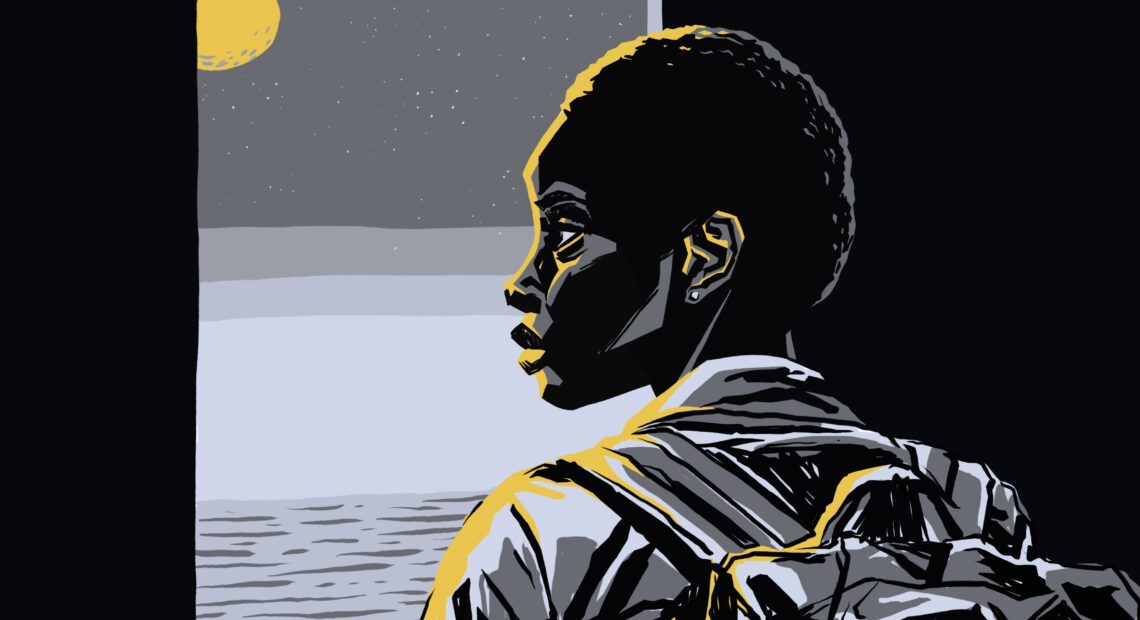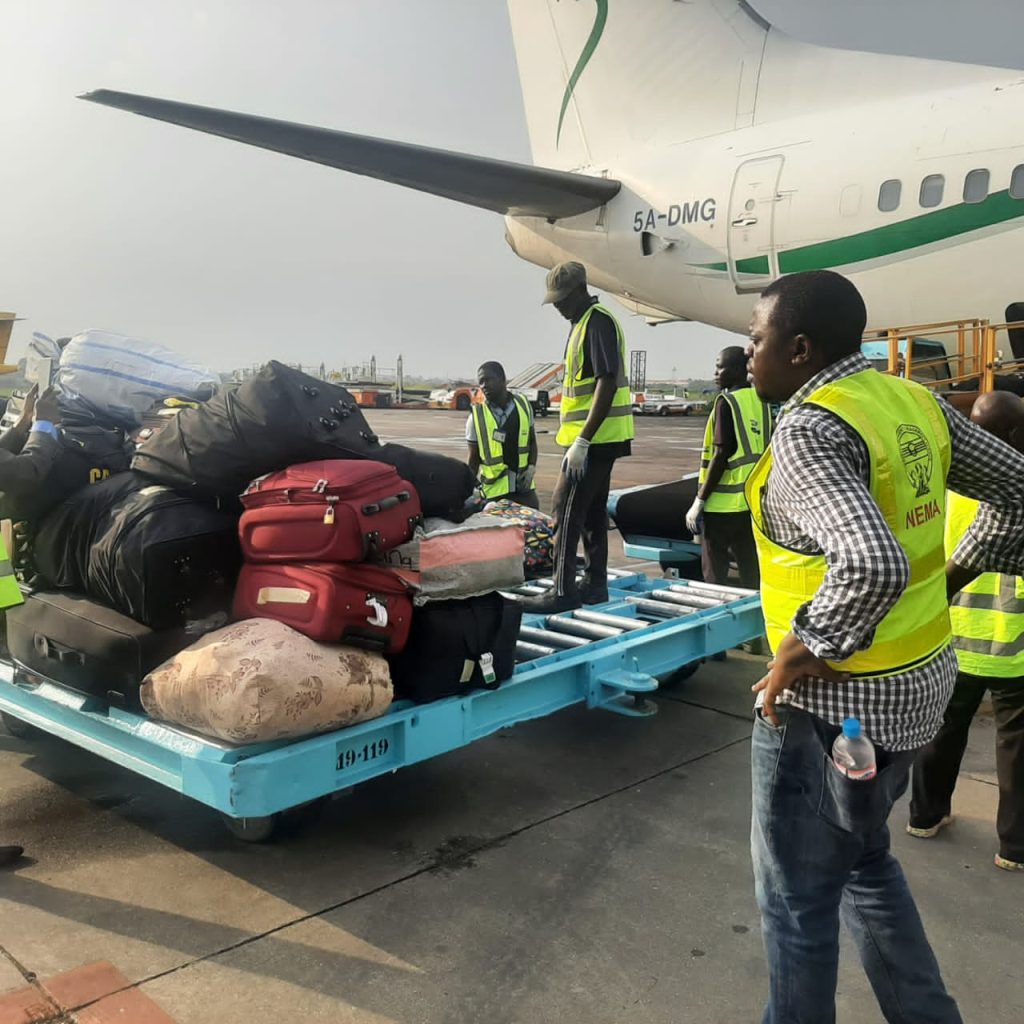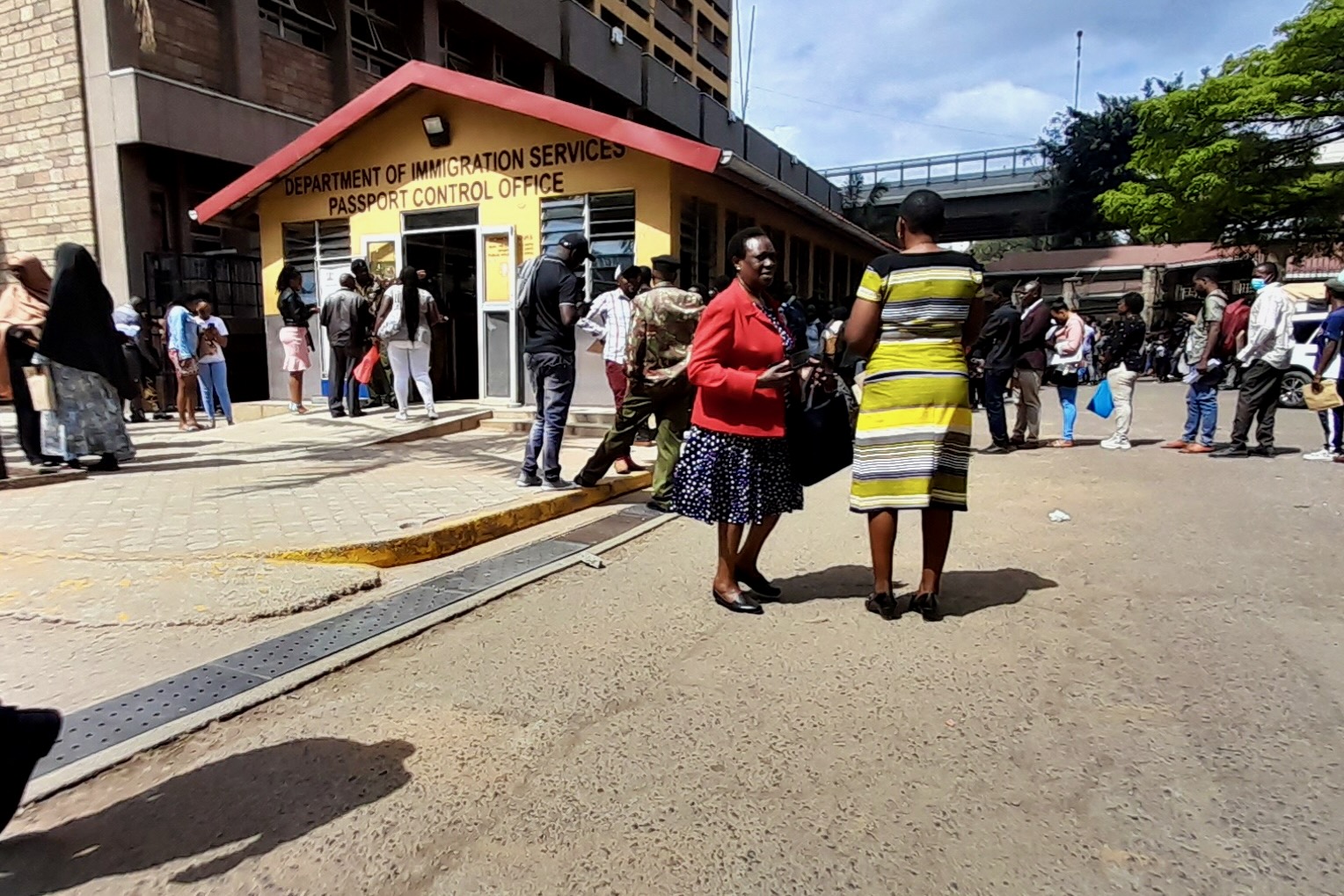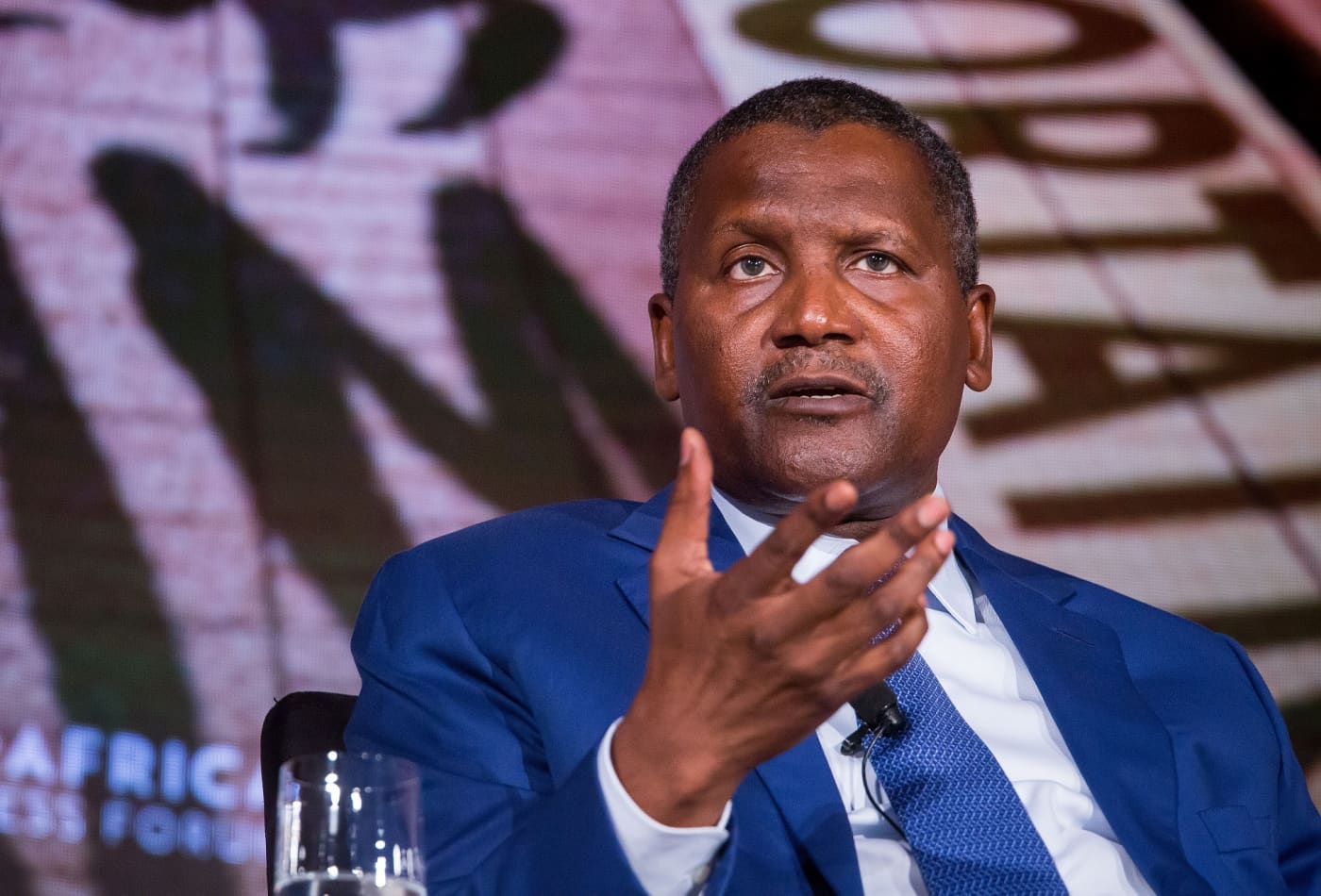Paying dictators | The Making of African Migration

By Elizabeth BanyiTabi, Emmanuel Mutaizibwa, Ngina Kirori, Theophilus Abbah and Brezh Malaba
Key Points
-
Over sixty percent of EU-funded “returnee projects” fail
-
“Rescue centres” in Saudi Arabia keep women detained for years
-
Cameroonian businesspeople in the diaspora have stopped investing in their home country
-
Migrants who were returned to Cameroon were arrested, tortured, and raped
-
In Nigeria, returned migrants were abandoned into destitution
-
€250 million from the EU for the development of a biometric ID for Nigerians did not stop border crossings but enriched politically-connected businessmen
-
Numbers of “returned and resettled” migrants pale in comparison to the thousands who continue to leave
-
Estimates of sub-Saharan Africans currently living in exploitative conditions, or are detained, in north African countries like Libya hover between one and two million.
Stuck in the desert in Algeria “with nothing”, Uka Ifeanyi, on February 14, 2023, accepted an offer by the International Organisation for Migration (IOM), -which is funded by the European Union to carry out “returnee projects” for failed migrants- to resettle back home in Nigeria. Brought back by air to Lagos, the IOM staff “asked us to wait for three months for our accommodation and resettlement,” he says in a telephonic interview with ZAM’s Theophilus Abbah. “However, no one has called us since then.”
This was not what Ifeanyi had expected, since the IOM officials had specifically asked him about his skills and written down his answers, saying that he would be assisted to start a small business in his home area. “They had asked me what I wanted to engage in, and I told them I wanted to go into plumbing business. I’m a good plumber, I can repair toilets, I can engage in the sale of cement. They wrote all these things down, gave us each N50,000 (US$65) in a bank card and asked us to go to our homes. But they never called again.”
Grace Onuru squats at night in a primary school
Fellow returnee Grace Onuru, who was stuck in Libya after her efforts to enter into Europe failed, was assisted by the IOM to return to Nigeria in March 2023. On arrival in Lagos, she says, “the IOM officials asked each of us what trade we wanted to engage in. I told them I was a trained nurse, so I wanted to open a pharmaceutical shop.” Like Ifeanyi, Onuru was given a bank card loaded with the equivalent of US$ 65. “This was to transport us to our homes in Nigeria. They promised to reach out to us in three months. But six months after, nobody has called or reached out to me.” Onuru says she desperately needs help. “At the moment, I’m stranded. None of my family members can help me.” Save for a primary school in Lugbe, Abuja, where she squats at night, she has no place to rest her head, she says. “I have no food to eat and no house to live in. I have no job and no one to turn to.”
These stories of desperation and abandonment are echoed in several reports, including one by researchers commissioned by the European Union itself (https://www.magyc.uliege.be/upload/docs/application/pdf/2021-09/d7.5v1-july-2021.pdf), that talk of a majority of returned migrants still living in tents, having disappeared, or worse off than before. All reports concurred that over 60 percent of Nigerians who were “rescued” (often, as it turns out, from jails and detention centres in north Africa) are likely to try leaving again. Even three established returnees interviewed by Theophilus Abbah, who have over the past five years, with help from EU-funded projects managed to start a fish farm, a hair salon, and a welder’s and electrician’s shop, tell him that many or most of the people they came with (one mentioning many “single mothers who were supposed to start hair salons”) have left again, selling their “starter packs,” according to one interviewee in some cases “with help from IOM staff.”
Inefficiencies
The IOM did not respond to telephonic and emailed requests for comment, either on this accusation, or on any other questions, but inefficiencies have certainly befallen its Nigerian staff since 2017, the year in which the three successful returnees interviewed by Abbah started their businesses. When Abbah asked Osita Osemene of the Patriotic Citizens Initiative, one of the NGOs involved in the resettlement programme, what could be the reason for the sad fate of the more recent returnees, Osemene said that, unlike in the previous cases, the IOM and the Nigerian government have done little to enable them to resettle. He added that, in his view, the Nigerian government was most to blame for this. “These are Nigerians; our government must take responsibility. The IOM (…) is supposed to continue to support them (…) and give some capital to start business. This has not happened. However, what is the Nigerian government doing about it?”
But what is the Nigerian government doing about it?
Spokesman Monzo Ezekiel for the National Emergency Management Agency (NEMA), which is in charge of transporting returnees back to Nigeria, said in response to questions that NEMA’s mandate is “to receive those who have been evacuated from north Africa by the IOM to Nigeria. We (…) give them the financial support to return to their homes of residence. To provide entrepreneurial training or to give them capital to start businesses is the responsibility of the National Commission for Refugees, Migrants, and Internally Displaced Persons.” The spokesperson of the Refugee Commission, Khadija Imam, did not respond to calls.

The airport ground services unload luggage belonging to Nigerian returnees from Libya. Source: National Emergency Management Agency (NEMA)
Detention centres
According to an investigation by the Correspondent https://thecorrespondent.com/collection/migration, the European Union funded, between 2011 and 2019, 47 regional “transport facilitation” projects, whereby migrants are found along migrant routes in northern African countries and “assisted to voluntarily return” to their places of origin, at a cost of €775 million. In Nigeria alone, the cost was €68 million (https://thecorrespondent.com/150/a-breakdown-of-europes-eur1-5bn-migration-spending-in-nigeria). But even in cases where the projects have been successful, their true impact is dubious. While the IOM in Nigeria states in its 2021 report that it helped 3,042 migrants “voluntarily return” to Nigeria from the north, this pales in comparison to the estimated number of between 44,000 and 85,000 Nigerian migrants leaving along illegal routes in the opposite direction every year (2).
According to research from 2007, between four fifths and two thirds of this number are likely to remain stuck in north Africa (see note 2), but this percentage may have increased significantly in the past eight years since European initiatives turned the north African border areas into heavily guarded barriers. Since 2015, EU pressure has led to criminalisation of transport along migrant routes, and the US$ six billion European Emergency Trust Fund for Africa, also established in 2015, has paid for infrastructure that delivers illegal migrants to prisons and detention centres in Libya. (see inter alia https://www.groene.nl/artikel/een-hel-creeren-om-mensen-af-te-schrikken (in Dutch) and https://www.msf.org/italy-libya-agreement-five-years-eu-sponsored-abuse-libya-and-central-mediterranean). Total estimates of sub-Saharan Africans currently living in exploitative conditions, or are detained, in countries like Libya hover between one and two million.
The IOM noted “lack of constancy and/or dedication of some returnees
Broiler chickens
In Cameroon, according to the IOM, 5,450 migrants have been “enabled to return and reintegrate” under the EU-IOM Joint Initiative for Migrant Protection and Reintegration between 2017 and 2021. In a report that focuses on the period between January and June 2021, the IOM writes that in these six months, 233 Cameroonians benefited from its “assisted voluntary return and reintegration programme” https://storyteller.iom.int/stories/migrant-return-and-reintegration-complex-challenging-crucial. The organisation notes that this has been “far from a smooth ride” and that “there are lags for some reintegration projects because of lack of constancy and/or dedication of some returnees applying for socioeconomic reintegration.” Quoting a returnee identified as Arnaud, 31, who returned from Algeria in January this year, and who “initially faced a tough time” but now “keeps and sells broiler chickens,” the report says that, in his case too, “challenges remain.”
Not going back home anymore, too
Also in Cameroon, reporter Elizabeth BanyiTabi looked into a privately run project by Cameroonian expat businesswoman Miranda Oben, who resides in Germany and claims on Facebook that she has been instrumental in convincing successful Cameroonians in the diaspora to “go back home and invest.” Success stories celebrated on her page include a returnee who opened an eye clinic in Yaounde, one with a tech company, and “a pioneer in the sector of healthy and processed baby food Made in Cameroon.” However, according to project coordinator Kristelle Asek, the project, whose website is now offline, has stalled since 2020 “due to COVID and the armed conflict in the country.” Neither Asek nor Miranda Oben responded to questions about the amount of investments, records, and successes in the period between 2020 and the launch of the project in 2017.
The deported returnees suffered persecution
Human Rights Watch, meanwhile, has reported that between 2020 and 2022, 80 to 90 failed asylum applicants to the US, who were deported back home to Cameroon, suffered persecution and other serious human rights violations as soon as they were back in their country, with some saying they were arrested, beaten, and raped by gendarmes afterwards. https://www.hrw.org/report/2022/02/10/how-can-you-throw-us-back/asylum-seekers-abused-us-and-deported-harm-cameroon.
Like Nigeria, Cameroon’s returnee numbers remain small in comparison with those of exiting migrants. Whereas the IOM reports just over 1,000 returnees per year, in 2022 alone 8115 Cameroonians, eight times more, left to apply for asylum elsewhere https://www.worlddata.info/africa/cameroon/asylum.php#:~:text=8%2C115%20people%20from%20Cameroon%20fled,asylum%20applications%20have%20been%20rejected, in the overwhelming majority of cases outside Africa. (Only around 600 asked for protection in fellow African countries). It is not known how many perished or were left without means to continue their journeys. It is also not known what happened to, according to the data mentioned above, the 5,437 individuals whose applications were rejected.
Rescue centres
According to Kenyan NGOs, there are thirteen “rescue centres” for abused Kenyan labourers in Saudi Arabia. Run by the Saudi state, and receiving only the occasional visit from Kenyan dignitaries, these centres have not been getting good press. Women have reportedly been held for years while their “documentation is being processed” and there is a lack of care for those who fall ill. “Many women are stuck in the rescue camps,” says spokesperson Fred Ojiro of the human rights NGO Haki. “In fact, in the second week of June, one woman died while she was there.” Other reports of deaths in the camps could not be confirmed.
If estimates that a large majority of migrant labourers, especially female domestic workers, of the around 300,000 Kenyans working in Gulf States are exploited, beaten, and raped in their places of employment are correct, the number of women who are hosted in such camps is also remarkably low: according to official figures, 288 in total. Whether this means that women prefer their “slave” jobs to the camps, don’t want to be processed to go back home, or simply are not aware of the existence of these camps (or, for that matter, of the hotline and email address that the Kenyan government says it maintains) could not be ascertained.

People wait outside the immigration office to process their documents and passport applications. Photo by Ngina Kirori
As for being resettled back home, there are no reports (beyond Foreign Affairs and Diaspora Permanent Secretary Roseline Njogu saying that tickets back to Nairobi from rescue camps “have been funded” by her department) that any abused domestic workers have received assistance to start new jobs in Kenya. “We do what we can,” sighs Faith Murunga, adding that the NGO where she works doesn’t have resources to do more than run awareness campaigns either.
Biometrics
With most Kenyan and Ugandan migrants going to the Gulf, the EU doesn’t seem to be overly concerned with stopping people at their exit from these countries. When it comes to Nigeria and its neighbours however, the largest expenditure from the anti-migration Emergency Trust Fund for Africa goes to border control: €250 million out of the €770 million spent between 2011 and 2019 paid for the development of a biometric digital ID for Nigerians, meant to stop illegal border crossings.
But this project, too, is unlikely to achieve its purpose. Theophilus Abbah unearthed in an earlier ZAM investigation https://www.zammagazine.com/investigations/1414-nigeria-the-border-control-syndicate-how-plunder-continues-in-spite-of-parliament-and-the-courts that Nigeria’s borders remain as porous as ever, while the new biometric ID project has merely been a cash cow for various corrupt syndicates operating in and around Nigeria’s immigration service, NIS.
A poll conducted by the Nigerian Bureau of Statistics among returnees from Europe shows that, in their view, migration to Europe would reduce if Nigeria would offer jobs, education, safety and security, social infrastructure, and a change of the prevailing patronage system (called “discrimination of certain groups” in the poll) that is endemic in the country. Health advocate Dr Ejike Oji, who has studied the migration of medical doctors to Europe, argues that the EU would need to change the focus of its interventions away from “only border control”, and instead engage government officials “on the issue of social injustice in Nigeria.”
Europe fears turning black more than nuclear war
The same might be said in the cases of the other African countries in this investigation. But judging from recent EU, European countries and UK ’ “Africa strategy” documents (see inter alia here https://ecfr.eu/event/a-renewed-partnership-between-europe-and-africa-where-do-we-stand/#:~:text=In%20February%202022%2C%20the%20European,African%20continent%20as%20part%20of , here https://international-partnerships.ec.europa.eu/policies/africa-eu-partnership_en , here https://www.institute.global/insights/geopolitics-and-security/security-soft-power-and-regime-support-spheres-russian-influence-africa and here https://www.government.nl/latest/news/2023/05/31/dutch-strategy-on-africa-2023-2032 ), policies in that region have only doubled down on “enhanced cooperation on migration and mobility” in “equal partnerships” with governments in countries where many citizens say they want to get away.
This strategy remains in place in spite of an avalanche of recent research, some of which was reproduced on the European Commission’s own website https://commission.europa.eu/strategy-and-policy/priorities-2019-2024/promoting-our-european-way-life/statistics-migration-europe_en, showing that African illegal immigrants are a miniscule proportion of total migration trends in and out of Europe. During the course of this investigation, two European diplomats confirmed in off-the-record conversations that they were aware of this, but, said one, the measures continued “because of the pressure of populists.” Extreme right wing populists in European countries, and the UK, have repeatedly expressed concern about their countries being ‘flooded’ with African immigrants, leading Nigerian opinionista Onye Nkuzi, who has over 300,000 followers on Twitter and often analyses migration trends and European attitudes, to tweet “Europe fears turning black more than nuclear war,” in August this year.
Putin
The second biggest concern in the above mentioned policy documents is, however, the spectre of Russia’s president Putin, and slightly less prominently, China (diplomatically called “other geopolitical players” in the papers). Probably partly informed by a spate of pro-Russian moves and coups in francophone Africa, the papers express fears that such “other geopolitical players” will “extend their influence” over African governments. It is therefore important that African governments must be embraced in “equal partnerships” more than before.
Support for “civil society” and “free media” are mentioned with much less fervour and far less frequently in the papers, prompting a Cameroonian interlocutor, who is part of the democratic opposition, to ask: “But why can’t they just support us?”
Note: the very rough number is derived from 2007 estimates indicating that between 20 and 38 percent of illegal migrants travelling the northern route, aiming for Europe, never succeed in proceeding beyond North Africa, see “Irregular migration from West Africa to the Maghreb and the European Union: An Overview of Recent Trends” by Hein de Haas https://publications.iom.int/system/files/pdf/mrs-32_en.pdf . We applied these (admittedly old) percentages to a base number of the 16,980 European asylum applications by Nigerians in 2022, https://euaa.europa.eu/latest-asylum-trends-annual-overview-2021#:~:text=EU%2B%20asylum%20authorities%20issued%20about,first%20instance%20granted%20refugee%20status . According to this calculation, if 16,980 individuals represented 20%, then 84,900 would have tried to get to Europe but around 68,000 (80 %) of these got stuck in North Africa and only 16,980 “made it.”
This investigation was coordinated and edited by ZAM’s investigations editor Evelyn Groenink
Read other reports here…
Losing hope |The Making of African Migration
Migration is not the West’s problem, it is Africa’s
Where exit is the biggest cash cow
Uganda| Between prayer and protest
Nigeria | The returnees who leave again
Cash cows | The Making of African Migration
Migration is not the West’s problem, it is Africa’s
The Insight Report
Nigeria Coverage



